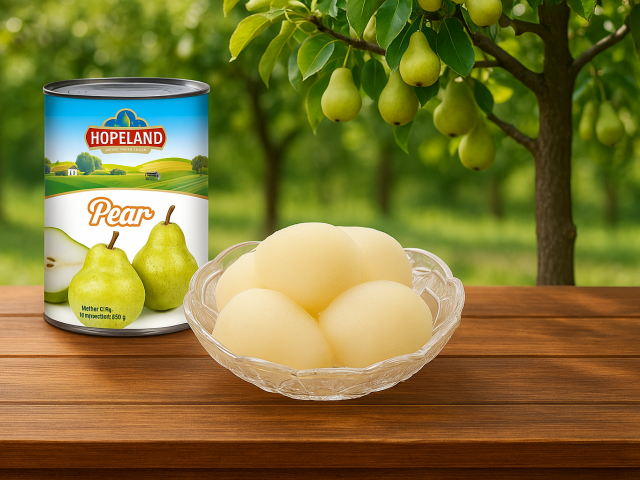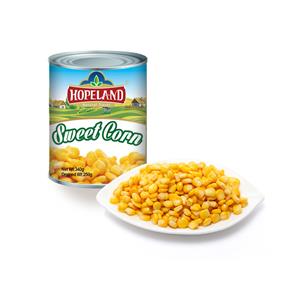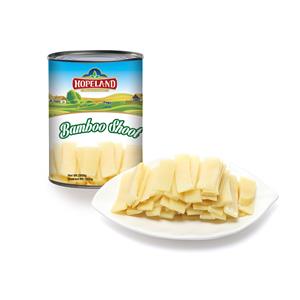New Season for Canned Pear is Coming!
As the pear harvest begins across the lush orchards of northern China and other key growing regions, food processors and global buyers alike are preparing for the arrival of a fresh wave of canned pear products. This annual season marks the beginning of a bustling time for producers, exporters, retailers, and consumers who are all eagerly anticipating the sweet, succulent taste of pears preserved at their peak freshness. With the 2025 harvest now underway, it’s the perfect moment to explore what makes canned pears a staple in pantries worldwide and why this season promises a bumper crop of opportunity.
From their natural health benefits and culinary versatility to their importance in international trade, canned pears are more than just a convenient fruit product — they are a symbol of freshness, reliability, and tradition. In this article, we’ll delve into the world of canned pears, highlighting what makes this season special, how canned pears are processed, the different types available, and how they can be used in a range of dishes. Whether you are a consumer, wholesaler, or distributor, now is the time to pay attention — the new season for canned pears is coming, and it’s one you won’t want to miss.

A Seasonal Highlight: Pear Harvest and Canning Time
The pear season typically begins in late summer, from July through September, depending on the region and variety. The timing is crucial — pears are harvested when they have reached optimal size and sugar levels but before they are fully ripe. This ensures they can be peeled, cored, and canned while still firm, resulting in the best texture and flavor for shelf-stable products.
In regions like Hebei, Shandong, and Xinjiang in China — some of the world’s most important pear-growing areas — farmers and factories coordinate closely to ensure that fresh pears are sent for canning immediately after harvest. Speed and freshness are critical. The shorter the time between picking and processing, the better the final product.
Each year, the arrival of the pear harvest brings new excitement to the canned food industry. Factories increase production capacity, workers gear up for around-the-clock shifts, and buyers from across the globe begin placing orders to ensure early access to the freshest stock. This period also allows companies to restock inventory for domestic sales and prepare shipments for international markets.
Why Choose Canned Pears?
Canned pears offer numerous benefits that make them a popular choice for households, restaurants, schools, and foodservice providers around the world.
1. Peak Freshness Preserved
One of the primary advantages of canned pears is that they are processed at the height of their freshness. Immediately after harvesting, pears are washed, peeled, sliced or halved, and packed in light syrup, juice, or water before being sealed and sterilized. This rapid canning process locks in the pear’s natural sweetness, soft texture, and nutrients for long-term storage.
2. Convenience
Canned pears are ready to eat straight from the can. They require no peeling, cutting, or cooking, which saves time and effort — especially in commercial kitchens or for busy families.
3. Year-Round Availability
Unlike fresh pears, which have a relatively short shelf life and are seasonally limited, canned pears are available all year round. This makes them a reliable ingredient for recipes, school lunches, catering menus, and more.
4. Nutritional Value
Pears are naturally low in calories and rich in dietary fiber, vitamin C, and potassium. Canned pears retain much of their nutritional value, especially when packed in juice or water. They are a healthy alternative to many processed snacks and desserts.
5. Waste Reduction
Canned pears reduce food waste by preserving fruit that might otherwise spoil before reaching markets. Their long shelf life and sealed packaging also reduce the risk of spoilage during transport and storage.
The Production Process: From Orchard to Can

The journey of a canned pear begins in the orchard and ends on your plate. Here's an overview of how canned pears are made:
Step 1: Harvesting
Only the best pears are selected for canning — typically firm varieties like Bartlett, Ya Pear, or Snow Pear. Timing the harvest is critical to ensure the fruit is neither too soft nor underdeveloped.
Step 2: Sorting and Washing
Once delivered to the factory, pears are sorted for size and quality. Damaged or overripe fruit is removed. The selected pears are then washed thoroughly to remove any dirt or pesticide residue.
Step 3: Peeling and Coring
Industrial peelers remove the skin, while machines or skilled workers core the pears and cut them into halves, quarters, or slices, depending on the intended product type.
Step 4: Blanching and Syrup Filling
The pears are briefly blanched to soften them slightly and to preserve color and texture. They are then packed into sterilized cans with a syrup (light, heavy, or natural juice) or purified water.
Step 5: Sealing and Sterilization
The cans are sealed and heat-treated in pressurized steam retorts. This process ensures the product is shelf-stable and free from microbial contamination.
Step 6: Cooling, Labeling, and Shipping
Once sterilized, the cans are cooled, labeled, and boxed for storage or immediate shipment. Many companies conduct random quality testing to ensure every batch meets food safety standards.
Types and Specifications of Canned Pears
Canned pears come in a range of styles, grades, and packaging formats to suit different market needs:
Styles:
Halves: Ideal for desserts and decorative plating.
Quarters: Great for baking or fruit salads.
Slices: Perfect for tarts, pies, or easy snacking.
Dice/Chunks: Suitable for fruit cocktails and kids' meals.
Broken Pears: Often used in sauces or industrial food manufacturing.
Syrup Types:
Light Syrup: A mild sweetness that lets the fruit’s flavor shine.
Heavy Syrup: Richer and sweeter, ideal for desserts.
100% Pear Juice or Apple Juice: A healthier alternative.
Water Packed: Lower calorie option for health-conscious consumers.
Packaging Options:
Retail Cans: 425g, 567g
Food Service Sizes: 820g, 850g, 2500g, 3000g (A9)
Industrial Bulk: 18L tins or drums
Private Labeling: Available for supermarkets and importers
Global Demand for Canned Pears
Canned pears are enjoyed in countries across North America, Europe, the Middle East, Asia, and Africa. The United States, Canada, Germany, Japan, and Saudi Arabia are some of the largest importers of canned pear products.
The demand is driven by both consumer trends toward convenience and health, as well as by the needs of the foodservice industry — including hospitals, schools, and airlines — where consistent quality and availability are essential.
As fresh fruit prices rise or supply chains face disruptions, more buyers turn to canned fruits like pears to maintain product availability and pricing stability. Additionally, emerging markets are showing increasing interest in canned fruits, offering new opportunities for exporters.
Creative Uses for Canned Pears
Canned pears aren’t just for snacking — they’re incredibly versatile. Here are some creative and delicious ways to use them:
1. Pear and Cheese Salad
Combine canned pear slices with arugula, walnuts, and blue cheese for a sophisticated salad.
2. Pear Cobbler or Pie
Use canned pears as a filling for comforting desserts — perfect with cinnamon and nutmeg.
3. Breakfast Parfaits
Layer chopped canned pears with granola and yogurt for a nutritious breakfast.
4. Smoothies
Blend pears with bananas, spinach, and almond milk for a fiber-rich smoothie.
5. Roast Meat Garnish
Halved pears in light syrup pair wonderfully with roasted pork or duck.
6. Fruit Pizza
Top a cookie crust with cream cheese and a variety of canned fruits including pears for a fun party dish.
7. Chutneys and Sauces
Cook diced pears with ginger, vinegar, and spices for a tangy sauce to serve with meat or tofu.
This Season’s Outlook: What to Expect in 2025
The 2025 canned pear season is off to a promising start. Weather conditions in key producing regions have been favorable, leading to healthy fruit development and a balanced sugar-acid ratio, which is essential for flavor. Early reports suggest that yields will be slightly higher than last year, and fruit quality is expected to be excellent.
At the same time, processors are investing in updated equipment and improved quality control systems to ensure higher consistency, food safety, and efficiency. For international buyers, this means better product availability, customizable labeling options, and attractive pricing.
With the global logistics environment stabilizing, shipping lead times are expected to improve compared to previous years, allowing importers to restock shelves more quickly and respond to consumer demand.
Final Thoughts: Don’t Miss the Opportunity
The new season for canned pears is more than just a harvest — it's a celebration of freshness, tradition, and global culinary potential. Whether you are a buyer looking to source bulk quantities for retail or an individual who loves the convenience of canned fruits, now is the time to take action.
With their health benefits, shelf-stability, and endless culinary possibilities, canned pears continue to hold their place as one of the most beloved preserved fruits on the market.




